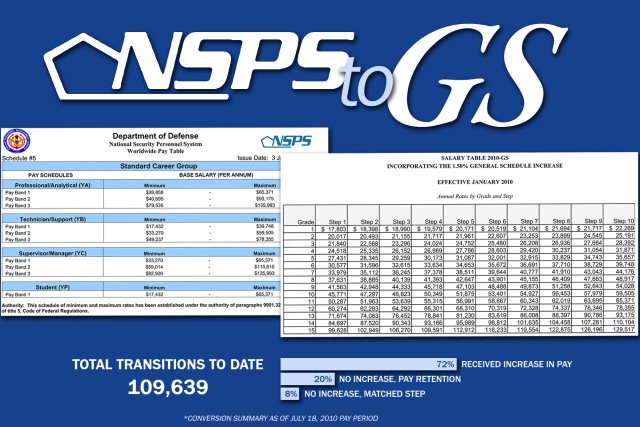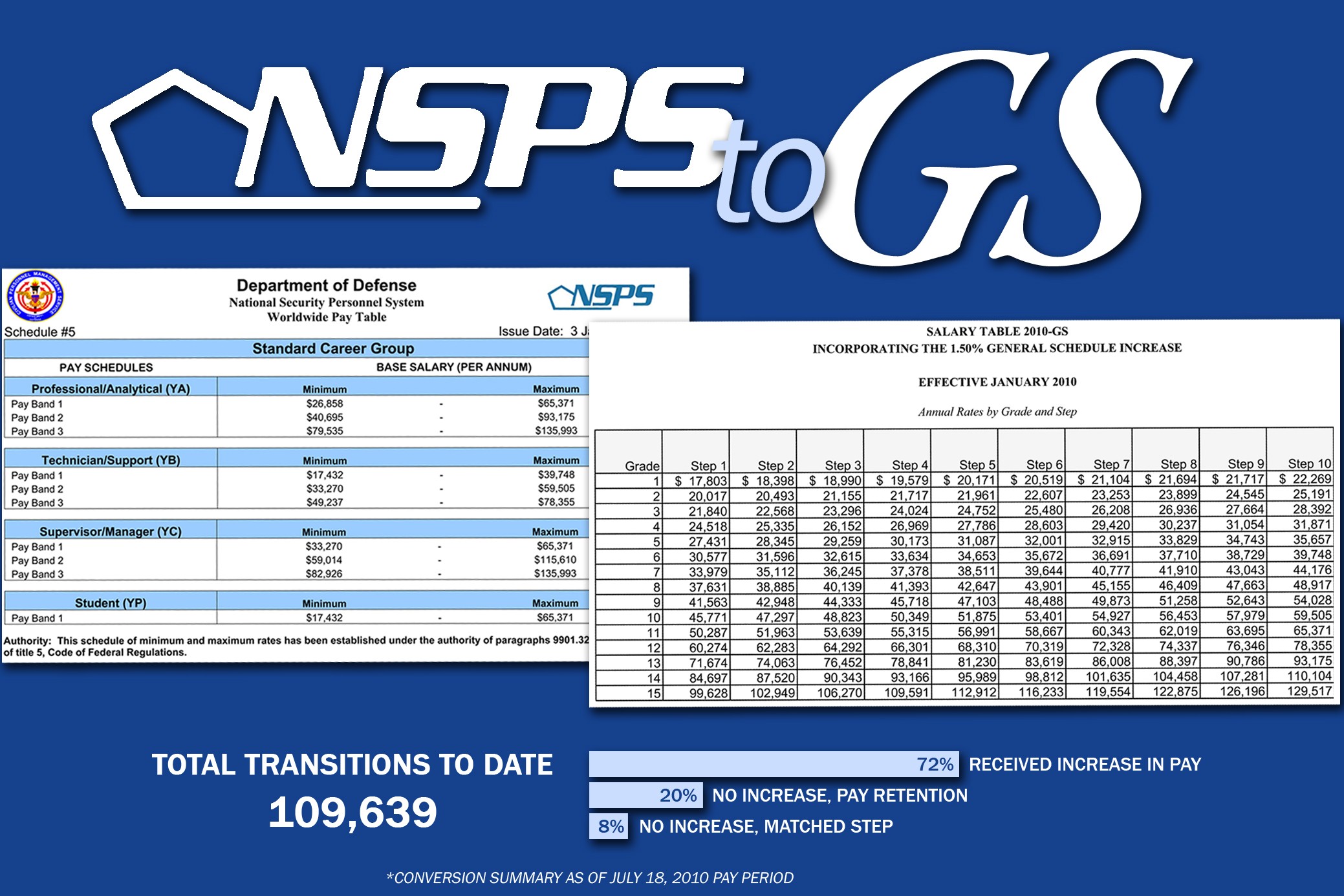CHIEVRES, Belgium - IMCOM employees throughout U.S. Army Garrison Benelux currently hired under the National Security Personnel System convert to the General Schedule system Aug. 15 as part of the last local wave of the transition schedule.
The rest of the civilian workforce at USAG Benelux, including employees of the Civilian Human Resources Agency, U.S. Army Europe, U.S. Army Medical Command and U.S. Army Network Enterprise Technology Command previously hired under NSPS, converted to GS earlier this year.
At an NSPS transition briefing, June 9, David Nixon, director of the Civilian Personnel Advisory Center, USAG Benelux, informed civilian employees on what they could expect under the GS system.
"The prime directive is that people will not lose pay on conversion," Nixon said, reassuring the audience in the auditorium on Caserne Daumerie.
As of the July 18 pay period, 109,639 employees have transitioned out of NSPS so far; 72 percent received a salary increase and 28 percent kept their old salary, according to the Defense Civilian Personnel Data System of the Department of Defense.
As Nixon further explained the transition process, he pointed out that a GS equivalent grade should be listed at the bottom of every NSPS employee's job description. The GS grade of a position is determined by the duties and applicable GS classification standards of the position, not the salary. Job descriptions for each position can be found on the Army's FASCLASS website.
"Upon transition, the employees receive a notification of personnel action (SF-50) in the form of a miscellaneous pay adjustment, which will document the new GS job title, job series, grade and pay for your transition into GS," said Nixon.
In very few cases, the occupational series might change during the conversion because new series were created under NSPS that haven't existed in GS before. Also, the wording of certain official job titles may change from one system to the other. Charts that show all NSPS Series and their GS equivalents as well as NSPS titles and their counterparts in the GS system can be found in the NSPS to GS Transition Guide.
From the GS equivalent grade and current salary, the within-grade step and therefore the new salary under the GS system is determined. Each of the 15 pay grades, ranking from GS-1 with the lowest skill level and pay to GS-15 with the highest skill level and pay, has a fixed minimum and maximum base salary range, comprising of 10 within-grade steps.
"What we do is compare your current salary to the 2010 General Schedule Base table and decide which step you would go into," Nixon explained. "There are four different scenarios for your salary matching up with the relevant pay table - your salary exactly equals a step, your salary falls between two steps, your salary is less than step one, your salary is greater than step 10."
If the NSPS salary exactly equals a step in the GS equivalent grade, the salary stays the same.
If the NSPS salary falls between two steps, the new salary will be set at the higher step, since one cannot lose pay upon transition.
If the NSPS salary is less than step one of the equivalent GS grade, the salary will be increased to match the step one.
If the NSPS salary is above the GS range of the equivalent GS grade, the salary will be retained until it can be accommodated with the GS range of the particular grade. Pay retention means that the employee receives half of any annual cost-of-living increase.
"Over time, the top step of your grade will eventually catch up to you because it's moving twice as fast as you are in terms of pay increase," said Nixon. "So when it equals or exceeds your retained pay, then you are the same as step 10 of that grade. That's how retained pay works."
If an employee's occupation is covered by a GS special salary table, the salary will be set on the applicable Special Salary Rates table and not on the GS Base table. Occupations covered by SSRs in the overseas area include Engineers, Computer Scientists and Computer Engineers, IT Specialists, Medical Officers and Air Traffic Controllers.
Another area affected by the NSPS to GS transition is the performance management.
"Of course we are moving from the NSPS performance management system to the existing Army management system, which is the Total Army Performance Evaluation System of TAPES," said Nixon.
In 2011, all employees will be fully integrated into the TAPES cycles for their particular GS grades, but prior to that, IMCOM employees will do an early annual appraisal and rating with a pay pool review.
"Your rating for 2010 is going to be under NSPS, but there is no payout," said Nixon, "so you're then going to have to go to traditional incentive awards to other tools that are available under GS."
Some of those incentive awards include performance awards like a cash payout based on the performance appraisal, an out-of-cycle within-grade increase, on-the-spot awards, special act awards, time off awards and honorary awards.
Nixon, who transitioned out of NSPS May 9, drew a chuckle when he said "I've been GS for a month now, and I don't feel any different."
Related Links:
Information, Training and FAQs CHRA Europe Region - NSPS Transition Out
GS Position Classification Standards


Social Sharing